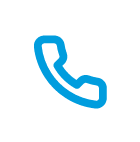Staying Secure: Access Control Best Practices
Access Control Best Practices
Access control systems help companies enforce where employees and visitors can and can’t go. The parameters, which are set up by a system administrator, corral and direct movement through a facility. But when access control best practices aren’t performed, problems occur — and these problems can be costly.
In Genea’s October webinar, Director of Access Control, Mike Maxsenti and VP of Sales, Rob Vail, provide tips and tricks to help viewers get the most out of their access control. Attendees can find answers to:
- Why assessing your current system is crucial
- What access control practices put you at risk
- How you can minimize risks
- How Genea can help streamline communication between HR, IT, and physical security teams
As the webinar commences, Maxsenti shares five common risks in access control.
- Shared/Lost Key Cards
- New and Recurring Visitors
- Theft
- Health
- Outdated Systems
Through real-world examples, Maxsenti shares stories ranging from the ease of cloning a key card to a disgruntled former employee stealing car keys and crashing the boss’ car. With each anecdote, Maxsenti provides the solutions that could have prevented the situation from occurring in the first place. Check out some of the stories below or click on the link above to watch the video.
Shared or Lost Key Cards
“As recent college graduates with no VC funding, we were broke. So, we got one hot desk membership at this coworking space,” Maxsenti began.
He and his two colleagues at their access control startup found it inconvenient having to arrange times to exchange their key card. So, they instead did what many struggling post-graduates would do — they cloned the one card they had with a $25 reader/writer.
Physical cards, like the one Maxsenti used, have several inherent risks, including sharing, duplicating, and hacking. Mobile access control is a more secure alternative because it enables two-factor authentication, which grants temporary access (i.e., use-it-or-lose-it timeframe).
Additionally, manually programming key cards adds more work to the busy schedule of IT teams.
“Just losing a credential and having to reissue that…can be very time-consuming for a lot of customers,” Vail added.
After the key card portion of the webinar ended, the webinar shifted to visitor access control.
New and Recurring Visitors
One of the major issues facing IT and security personnel is how to handle visitors. Hundreds of unfamiliar faces can pass in and out of a building every day, creating potential security risks. Maxsenti details how a pre-registration system, one in which guests receive credentials before their arrival, vastly improves access control. These improvements include:
- Mitigating lines of people waiting at the reception desk
- The ability to cross-reference. Receptionists or building security can cross-reference guests with a visitor sign-in list.
- Enforcing watch and banned lists
Many companies choose to integrate access control with additional visitor management apps. For example, Genea Visitor Management provides innovative and robust tools to improve lives in spaces where people live, work and play.
Theft
Before concluding, Maxsenti tells another story, this time about a client.
One day, the client had to terminate an employee. Unfortunately, the termination went sideways. Disgruntled at being fired, the employee left, then came back. His badge hadn’t been deactivated. So, he stole the managers’ keys and car and crashed it into the parking deck.
How had the employee been able to do this? Simple—nobody had deleted his credentials from the system. Had the client been using a cloud-based access control system, integrated with the HR database, the theft would not have occurred. API integrations with software like Asure, Okta, and Google Workspace, will delete credentials immediately. This helps mitigate internal risk.
“Customers have 10 to 15 years of keys that should not be activated anymore,” Maxsenti said. “The cloud allows you to clean house and prevent any theft.”
Conclusion
Just like cleaning is an important way to deter bugs from your home, access control best practices ensure bad actors don’t target your facility. For a complete list of best access control practices view the webinar above. Or, for even more help assessing your access control system, contact us! fef




